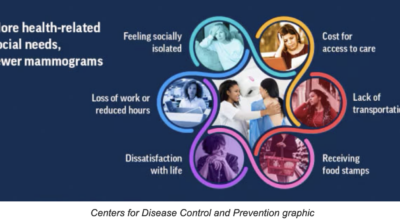Protect kids from toy lead hazards
Published 4:09 pm Tuesday, December 13, 2016
Many children get toys and toy jewelry as gifts during the holiday season but some toys may contain lead hazards. Lead is invisible to the naked eye and has no smell.
Children may be exposed to lead by simply handling toys normally. It is normal for toddlers and infants to put toys, fingers and other objects in their mouths. They may also be exposed to lead this way.
Protect children from exposure to lead in metal and plastic toys, especially imported toys, antique toys and toy jewelry. Toys imported into the United States and antique toys and collectibles often contain lead. To reduce children’s risk for exposure, the U.S. Consumer Product Safety Commission (CPSC) issues recalls of toys that could potentially expose children to lead. Learn more at www.cdc.gov.
How can I test a toy for lead?
Only a certified laboratory can accurately test a toy for lead. Do-it-yourself test kits are available, but they do not show how much lead is present and we don’t know how reliable they are at detecting low levels of lead.
What should I do if I am concerned about my child’s exposure to lead in a toy?
If you think your child has been exposed to a toy containing lead, remove the toy immediately. The only way to tell if your child has been exposed to lead is to have his or her blood tested. Contact your child’s health care provider to see if such a test is needed. Your child’s health care provider can recommend treatment if your child has been exposed to lead.
What are the effects of wearing toy jewelry?
Just wearing toy jewelry that contains lead will not cause children to have a high level of lead in their blood. However, chewing or sucking on the jewelry will. Make sure that children in your home do not have access to jewelry or other items that may contain lead. A child can get lead poisoning if he or she swallows or puts jewelry containing lead in his or her mouth.
What should I do if I think my child put lead jewelry in his or her mouth?
If you think your child put jewelry containing lead in his or her mouth, remove the jewelry and see your health care provider. He or she can do a blood test to see if your child has been exposed to lead and recommend treatment if necessary.
There is no safe level of lead in blood, and most children with high blood lead levels do not have any symptoms. As blood lead levels increase, a larger effect on children’s learning and behavior will occur. A blood lead test is the only way to know if your child has an elevated lead level.
Be sure your child’s toys are safe: Check the Consumer Products Safety Commission list of recalled toys. Photos and descriptions of recalled toys and toy jewelry are available on the www.cpsc.gov.
Call CPSC (1-800-638-2772) for more information. If any of your children’s toys are on the recall list, immediately take them away. Search your children’s toys for metal jewelry and throw it away.
Article information taken from www.cdc.gov
Clark County Health Department provides programs for the entire family, including Cooper Clayton, WIC, HANDS, family planning, well child care/immunizations and home health care. For more information, call 744-4482 or visit www.clarkhealthdept.org. You can also “like” us on Facebook.





